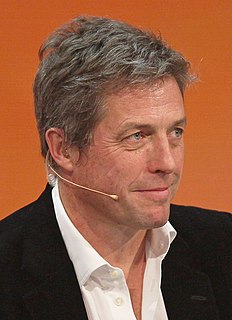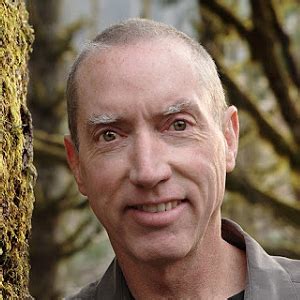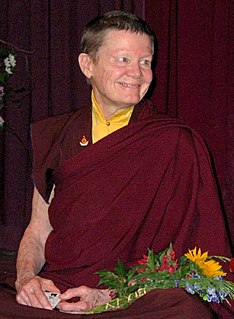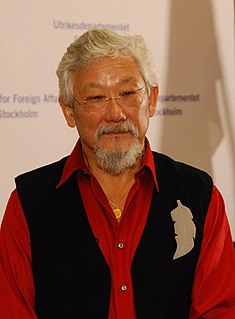Ein Zitat von Stephen Jay Gould
Es gibt kein Gen „für“ so eindeutige Teile der Morphologie wie Ihre linke Kniescheibe oder Ihren Fingernagel. [...] Hunderte von Genen tragen zum Aufbau der meisten Körperteile bei und ihre Wirkung wird durch eine kaleidoskopische Reihe von Umwelteinflüssen gesteuert: embryonale und postnatale, interne und externe. Teile sind keine übersetzten Gene, und die Selektion wirkt sich nicht einmal direkt auf Teile aus.
Verwandte Zitate
Komplexe Organismen können nicht als die Summe ihrer Gene betrachtet werden, noch bilden Gene allein bestimmte Elemente der Anatomie oder des Verhaltens. Die meisten Gene beeinflussen mehrere Aspekte der Anatomie und des Verhaltens, da sie durch komplexe Wechselwirkungen mit anderen Genen und ihren Produkten sowie mit Umweltfaktoren sowohl innerhalb als auch außerhalb des sich entwickelnden Organismus wirken. Wir begehen einen großen Irrtum und nicht nur eine schädliche Vereinfachung, wenn wir von Genen „für“ bestimmte Elemente der Anatomie oder des Verhaltens sprechen.
Als Autor glaubt man zu wissen, wo die guten und die schlechten Teile sind. Und dann liest man einer Gruppe von Kindern vor und lernt, wenn man sie langweilt, und eilt durch diese Abschnitte, um zu den Teilen zu gelangen, die sie wieder interessieren. Sie bekommen ein Gefühl für den Rhythmus und den Fluss Ihrer Geschichte.
Gute Arbeit macht man (unter anderem), indem man viel Arbeit macht, die nicht sehr gut ist, und nach und nach die Teile aussortiert, die nicht gut sind, die Teile, die nicht einem gehören. Man nennt es Feedback und ist der direkteste Weg, mehr über die eigene Vision zu erfahren. Man nennt es auch „Ihre Arbeit erledigen“. Schließlich muss jemand Ihre Arbeit erledigen, und Sie sind der Mensch, der Ihnen am nächsten steht.
Wenn Sie bereit sind, das Licht der Liebe auf die Teile zu richten, auf die Sie nicht stolz sind – auf die nicht akzeptierten Teile, die ungeliebten Teile, die unerwünschten Gefühle, in alle dunklen Winkel Ihrer Seele – wird die Liebe sie durchdringen, sie umarmen, bis du nur noch die Liebe selbst bist. Liebe entsteht, wenn man alles preisgibt.
Wenn Sie in ein Unternehmen kommen und eine Transformation durchführen müssen, sollten Sie sich das Unternehmen wirklich ansehen und sagen: „Okay, hier sind die Bereiche, die das Unternehmen gut macht.“ Wie bringen wir diese Gene zur Hyperexpression? „Die Gene, die im Weg stehen, wie schaltet man sie aus?“
Durch wiederholtes Üben des Körperscans im Laufe der Zeit erfassen wir die Realität unseres Körpers als Ganzes im gegenwärtigen Moment. Dieses Gefühl der Ganzheit kann man erleben, egal, was mit dem Körper nicht stimmt. Ein Teil Ihres Körpers oder mehrere Teile Ihres Körpers mögen erkrankt sein oder Schmerzen haben oder sogar fehlen, und dennoch können Sie sie in dieser Erfahrung der Ganzheit wiegen. - Jon Kabat
Gepardengene kooperieren mit Gepardengenen, jedoch nicht mit Kamelgenen und umgekehrt. Das liegt nicht daran, dass Geparden-Gene, selbst im poetischsten Sinne, irgendeinen Vorteil in der Erhaltung der Geparden-Art sehen. Sie arbeiten nicht wie ein molekularer World Wildlife Fund daran, den Geparden vor dem Aussterben zu retten.


































